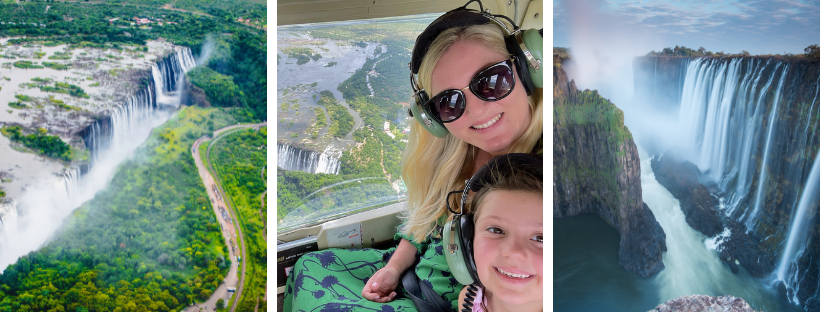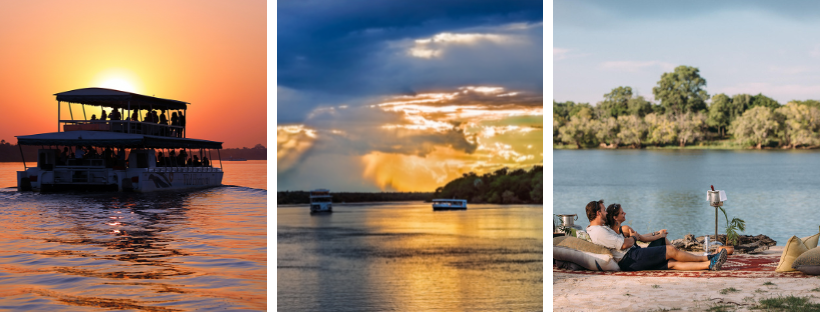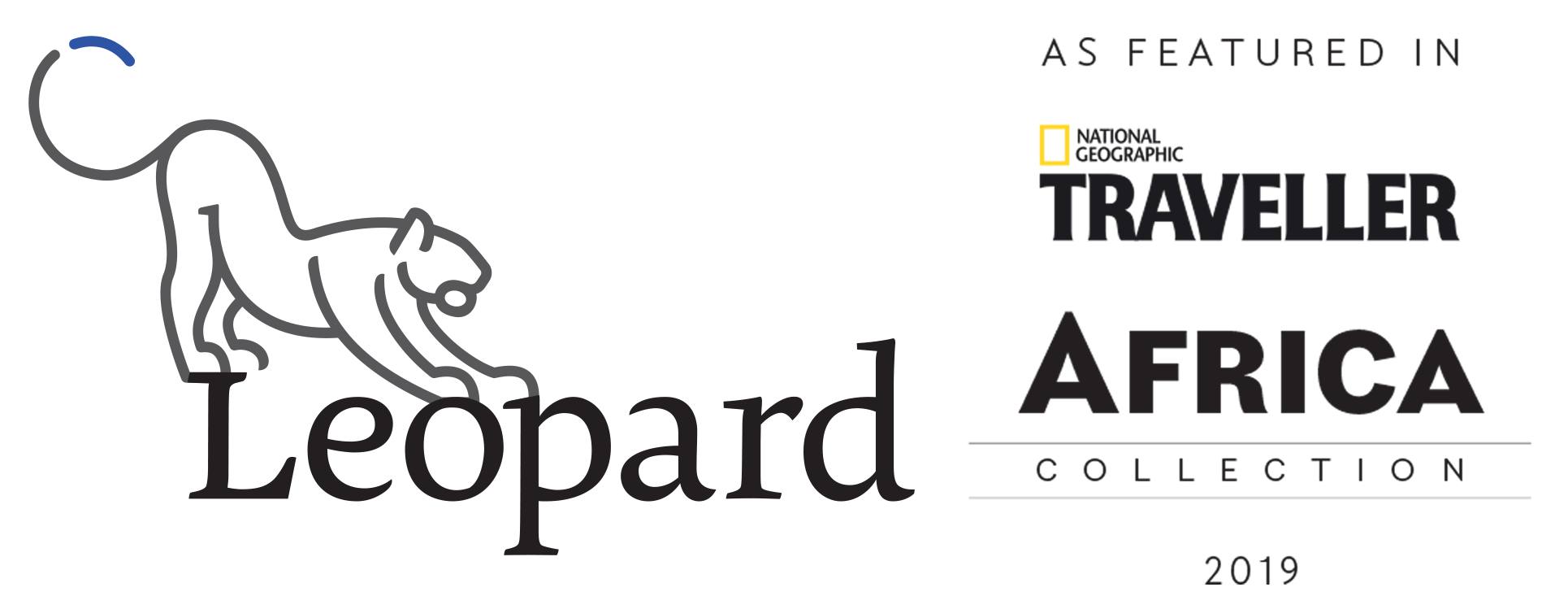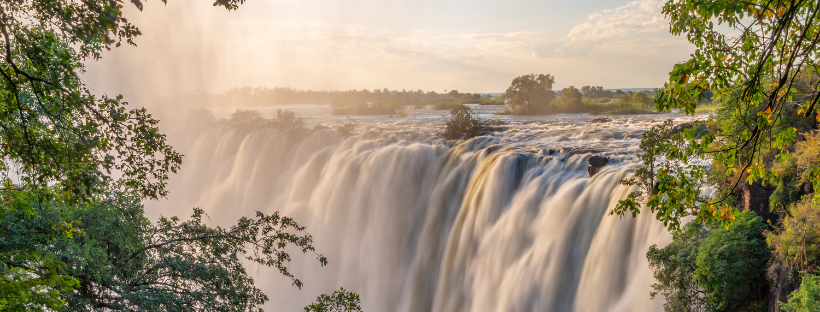Unveiling the Wonders of Victoria Falls
Getting close to the Victoria Falls
Feel gentle clouds of water wafting over you as you approach Victoria Falls while the thunderous sound of rushing water fills your ears. It’s an experience that any visitor to Africa, or local residents, should have at least once in a lifetime.
Besides being within spitting distance of this wall of water, getting an aerial perspective from a helicopter is also highly recommended. This birds-eye view will allow you to witness the colossal Zambezi, the fourth longest river in Africa, as it spills over the lip of a chasm into the gorge below.
Appreciating the falls from a distance
Once you’ve had a chance to get close, the falls can also be appreciated from further afield. From various viewpoints, including some lodges and hotels, you’ll be able to watch plumes of spray billow in the distance, producing rainbows that rise above the surrounding forest and create a halo above the Victoria Falls Bridge.

Where is Victoria Falls located?
Victoria Falls is situated about midway along the course of the Zambezi River which forms the border between Zambia in the north and Zimbabwe in the south. The falls were named by explorer David Livingstone, after England’s queen at the time, however, a more apt moniker might be that given by local people, Mosi-oa-Tunya (The Smoke That Thunders).
Has Victoria Falls ever run dry?
In 2019 a drought subdued the flow of the Zambezi River more than usual over the dry season, however, it didn’t stop flowing and neither did the Victoria Falls. The curtain of water was not as wide as usual and was not easily visible from the Zambian side, during this time, which is the case during most dry seasons.
What’s the best time of year to visit Victoria Falls?
There is no single best time to visit Victoria Falls, as it depends on what you want to experience. This massive body of water waxes and wanes in rhythm with the rainy and dry seasons, with the falls flowing at full volume between March and May. This period follows the rainy season between December and February. With the greater volume of water, more spray is generated, so you’re likely to get wet (if you don’t wear a raincoat) and the spray can limit visibility at certain viewpoints.
While the falls are not as voluminous during the dry season between August and December, you can see them more clearly without the mist and you have the option to visit Devil’s Pool (accessed from the Zambian side), which is not possible when the falls are flowing too strongly. This natural rock pool is situated on the edge of the falls where a rocky lip prevents brave visitors from being washed over.

What else is there to do at Victoria Falls?
It’s not surprising that Victoria Falls is one of the World’s Natural Wonders and a cornerstone destination on a Southern African visit. However, it’s not just this major drawcard that makes it worth the visit, there are many worthwhile experiences to be had in the area.
There are several adventurous activities in Victoria Falls including white water rafting, a gorge swing in the Batoka Gorge (or a zipline across it) and traditional dinners held at The Boma, followed by interactive African drumming and dance.
If you prefer a less frenetic pace, you could enjoy soaking in a tub overlooking the Zambezi River or discover elephants helping themselves to a drink from the private pool on your deck. There are also guided walks and safari drives in the Zambezi National Park or boat-based safaris on the river. All these offer a relaxing way to take in the surroundings and see some of the remarkable wildlife.
It’s also well worth enjoying a magical sunset cruise on the upper Zambezi, where you’ll have a good chance of spotting crocodile, hippos and elephant while sipping a G&T.
A popular extension to a visit to Vic Falls, is to cross the nearby border into Botswana and to explore the Chobe National Park, which is known for its large elephant population. You could also choose to arrive (or leave) Victoria Falls in the vintage wood-panelled coaches of Rovos Rail’s luxury train carriages. From Victoria Falls it carries passengers through Hwange National Park (rich in wildlife) and Matobo National Park, with its dramatic granite hills on the three-night journey en route to Pretoria, South Africa.
Happy travelling,
The Leopard Team
P.S. We’d love to help you design a bespoke experience to Victoria Falls so that you can enjoy a seamless experience visiting one of the marvels of Africa. Reply to this email or contact us at [email protected] to ask us any questions about travelling to the falls, or elsewhere on the continent.
Sign up for more newsletters like this here: https://mailchi.mp/2e4afa50d15f/leopard


